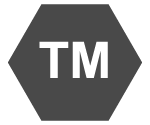Case Study 2: Licensing and Enforcement: Apple’s App Store

“Stay hungry, stay foolish.” — Steve Jobs, co-founder, Apple Computer Inc.
Apple started in the 1970s with Steve Jobs and Steve Wozniak, who invented the Apple-1 computer, which was a first single-circuit-board computer. Steve Jobs’s first patent was granted in 1983 and was titled “personal computer.” He has hundreds of patents to his name and he obtained 141 patents posthumously.
Patents have been vital to Apple’s success. Apple has amassed a powerful patent portfolio, especially in recent years. In 2014, Apple registered 2,003 patents, or 13 percent more than in 2013, putting it in eleventh place for patents granted. In addition, to better its competitive position, Apple has acquired a number of patents from competitors. For example, in 2011, Apple led a consortium to acquire more than 4,000 telecommunications patents from Nortel Networks for US$4.5 billion.
Select each type of IP below to reveal how Apple leverages the other forms of IP as part of its overall business objectives.
 Apple vigorously protects its industrial design rights and has industrial design registrations on virtually every design
element of each of its products.
Apple vigorously protects its industrial design rights and has industrial design registrations on virtually every design
element of each of its products.
 Apple has filed trademarks on everything from the Apple logo to its unique store design, and it vigorously defends them and
regulates their use through extensive license agreements.
Apple has filed trademarks on everything from the Apple logo to its unique store design, and it vigorously defends them and
regulates their use through extensive license agreements. Apple relies heavily on copyright protection for its software and user interfaces as well as user documentation and other
print or audiovisual material.
Apple relies heavily on copyright protection for its software and user interfaces as well as user documentation and other
print or audiovisual material. Apple is highly secretive about many aspects of its business. Some of its more sensitive commercial information is highly guarded
and is disclosed only on a need-to-know basis. The company is aggressive about protecting its confidential
information/trade secrets. For example, it has sued online journalists to force them to divulge the sources
of new product leaks.
Apple is highly secretive about many aspects of its business. Some of its more sensitive commercial information is highly guarded
and is disclosed only on a need-to-know basis. The company is aggressive about protecting its confidential
information/trade secrets. For example, it has sued online journalists to force them to divulge the sources
of new product leaks.